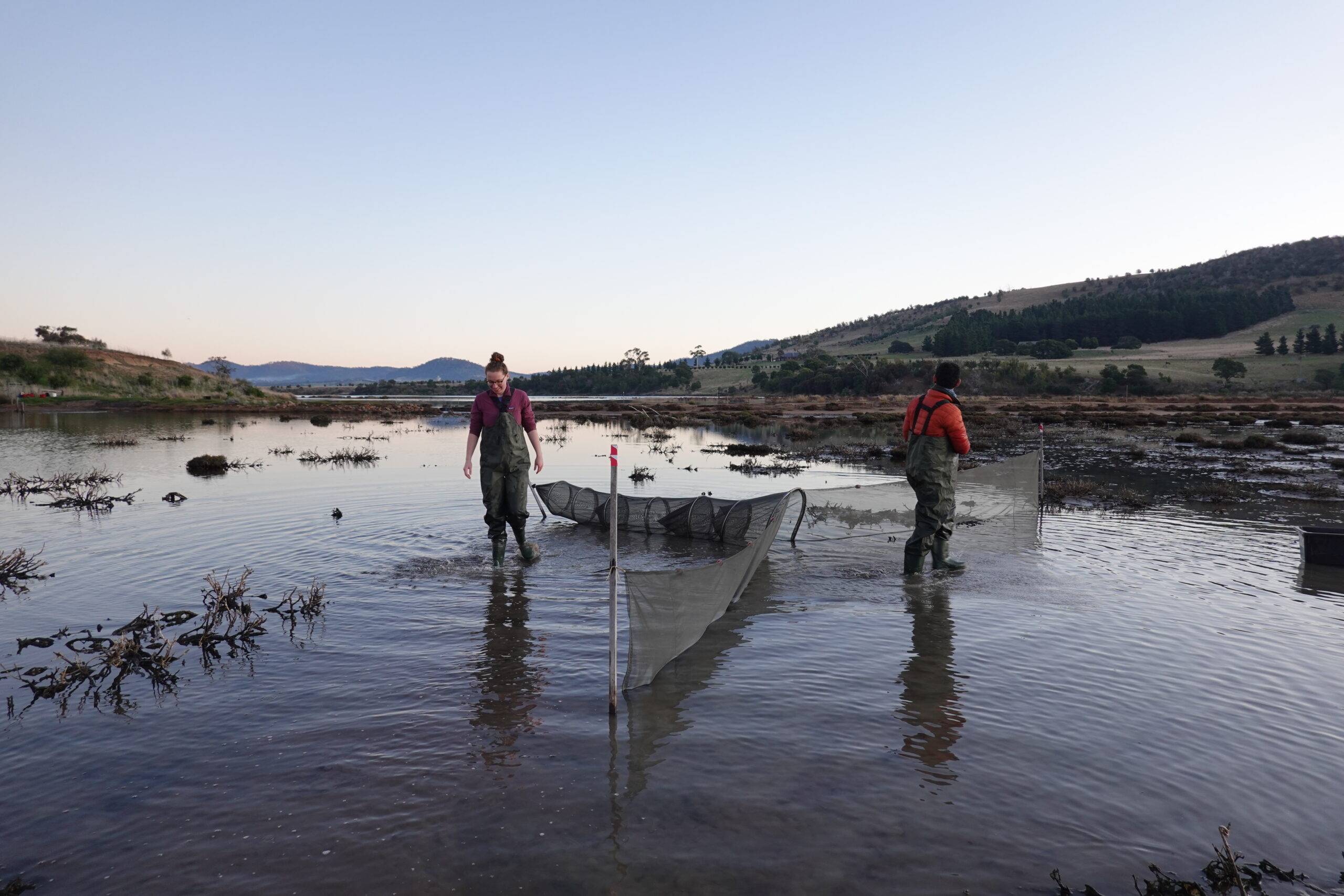MEDIA RELEASE
The sun is setting as a team of researchers set up their equipment for a series of night surveys looking into the local fish populations at Pitt Water-Orielton Lagoon. Part of a broader monitoring effort by NRM South and the University of Tasmania, these surveys are tracking any changes to the site’s plant and wildlife communities to see what impact restoration actions are having on the health of the lagoon.
‘Getting stuck in the mud is a given,’ explains Grace Isdale – NRM South’s project lead who has been helping to coordinate activities such as fish, plant and water level monitoring over the last three years. ‘You quickly gain confidence in extricating yourself – or reaching out for a helping hand.’
A helping hand is also what is on offer for this internationally significant wetland. Work to restrict stock access, tackle weeds, protect saltmarsh and revegetate the 65-hectare site have been underway since 2021, part of the Fisheries Habitat Restoration Program funded by the Australian Government, the project is being led by NRM South, in partnership with the University of Tasmania and OzFish Unlimited.
Once they have set the fyke nets, the small team retreats to dry land and waits for the tide to come in, the quiet night sky punctuated by the occasional splash of cormorants as they dive for fish and passing air traffic from the nearby Hobart airport. ‘It’s amazing that we have such a globally important wetland just on Hobart’s doorstep,’ said Grace. ‘The landholder we’ve been working with has been an amazing advocate for this project and is keen to see this site restored and repair some of the damage of decades past.’
One of these legacies was the construction of a bund, which has had significant impacts on natural tidal flows and movement of fish across the wetland. NRM South will be removing the full length of the bund later this summer and is interested in how removing this obstacle will impact on the local fish community. Saltmarsh wetland is important habitat for juvenile fish, and it is hoped that restoring the wetland will have positive flow on effects for the local community – including recreational fishers.
Once high tide arrives, the seine net comes out. One at each end, researchers walk through the ice-cold water holding the seine net between them, and survey the captured fish. ‘We’re typically finding smallmouth hardyheads, yellow eye mullet, and shrimp, plus the odd goby, common galaxias and greenback flounder. We record what they are and take some measurements before releasing them again,’ explained Grace. As the tide drops, it is time to check on the fyke nets, collecting data on the fish while evicting the curious crabs.
This is the second fish survey that has been carried out by the team, and the final survey for this round of the project. The data will be assessed, and more collected over the next few years as we continue monitoring activities after the bund removal.
-ENDS-
